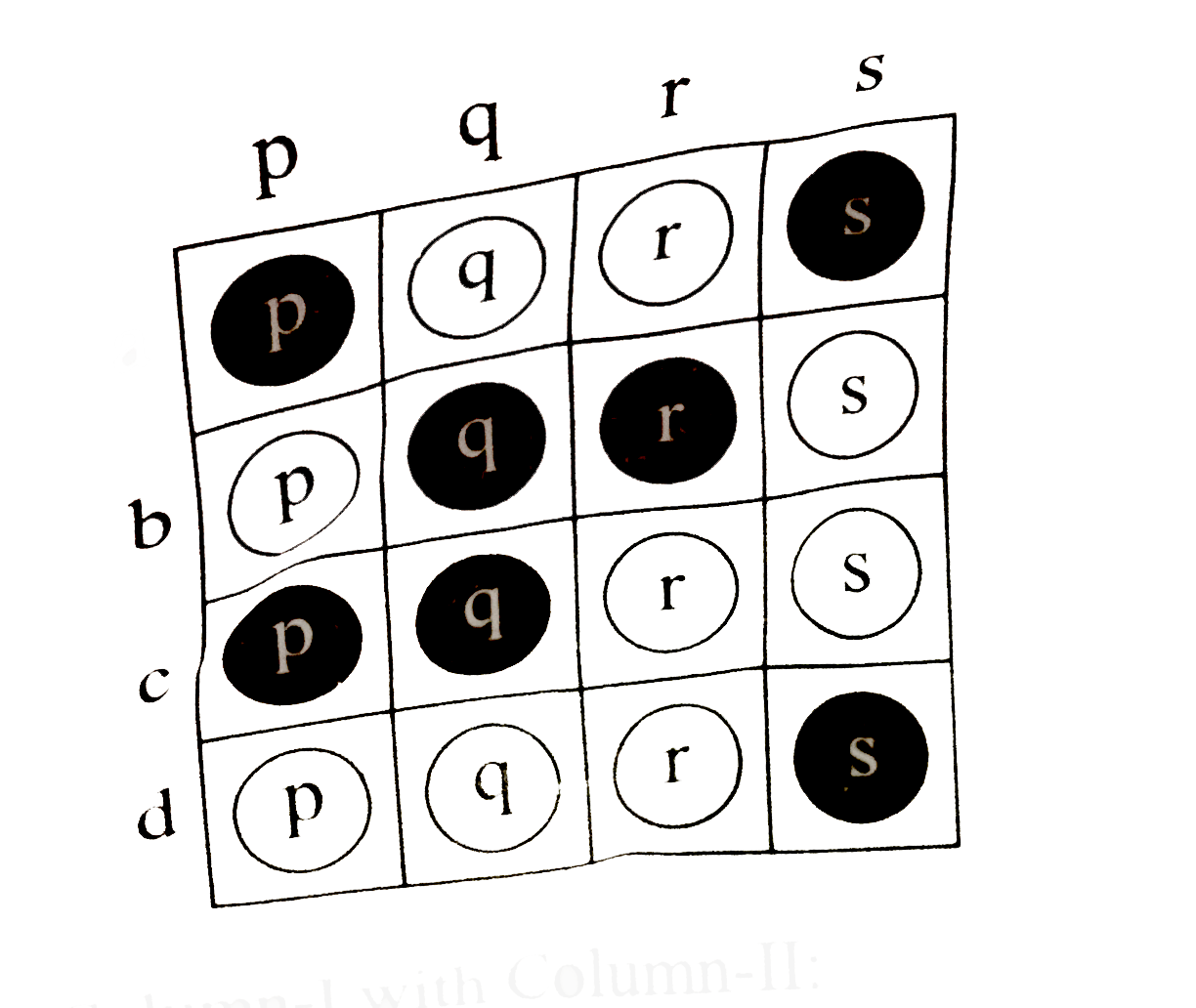According to cystal field theory, interaction between central metal atom/ion and ligand is electrostatic in nature. In free metal ions, the five d-orbitals are degenerate. However, in a ligand field e.g., tetrahedral, octahedral, square planar, square pyramidal, trigonal bipyramidal, the degeneracy of 5d-orbitals is lost.
If lobes of d-orbitals of central metal atom/ion are along the axes through which ligands are approaching, the energy of corresponding d-orbital is raised more than the d-orbitals having lobes between teh axes. e.g., octahedral complexes, square planar complexes, square pyramidal compexes.
Which of the following orbitals has the highest energy in square pyramidal ligand field ?
dxy
dz2
dx2−y2
dyz,d(zx)
The correct Answer is:C
Δt=49Δ0,Δsp=1.3Δ0⇒Δsp>Δ0>Δt
Topper's Solved these Questions
- COORDINATION COMPOUNDSBOOK - OP TANDONCHAPTER - COORDINATION COMPOUNDSEXERCISE - COMPREHENSION 8
3 Videos
- COORDINATION COMPOUNDSBOOK - OP TANDONCHAPTER - COORDINATION COMPOUNDSEXERCISE - COMPREHENSION 9
2 Videos
- COORDINATION COMPOUNDSBOOK - OP TANDONCHAPTER - COORDINATION COMPOUNDSEXERCISE - COMPREHENSION 6
2 Videos
- CLASSIFICATION AND NOMENCLATURE OF ORGANIC COMPOUNDS BOOK - OP TANDONCHAPTER - CLASSIFICATION AND NOMENCLATURE OF ORGANIC COMPOUNDS EXERCISE - INTEGER
2 Videos
- ELECTROCHEMISTRYBOOK - OP TANDONCHAPTER - ELECTROCHEMISTRYEXERCISE - Matrix-Matching Type Question
3 Videos
Similar Questions
Ligands are electron pair donor groups. Ambidentate ligands are those ligands where two different atoms can donate electron pair. The complex where ambidentate ligands are present shows linkage isomerism.
Total number of linkage isomers that are present in Na4[Fe(CN)5NOS] is :
View SolutionHCOONa350∘−−→ΔGas(X)+Rese(Y)CoCl3−−−→Complex(Z)
Choose the correct statement regarding (X).
View Solution
The complex (X) has tetrahedral geometry. The correct name of the complex (X) is :
View SolutionThe total number of alkyl groups having the molecular formula (c)C3H7(b)C4H9(c)C5H11 are.
View SolutionThis section contains 3 questions. Each question contains statement given in two columns which have to be matched. Statement (a, b, c and d) in Column-I have to be matched with statement (p, q, r and s) in Column-II. The answers to these questions have to be appropriately bubbled as illustrated in the following examples :
If the correct matches are (a-p, s), (b-q, r), (c-p, q) and (d-s), then correct bubbled 4×4 matrix should be as follows:

Match the column-I with Column-II :

View SolutionWhen the valence d-orbitals of the central metal ion split in energy in an octahedral ligand field, which orbitals are raised least in energy ?
View SolutionIn the formation of octahedral complex , ligands approach towards ________ and ______ orbital of central metal
View SolutionThe correct order of energies of d-orbitals of metal ion in a square planar complex is
View SolutionThe correct order of energies of d-orbitals of metal ion in a square planar complex is :
View SolutionAccording to cystal field theory, interaction between central metal atom/ion and ligand is electrostatic in nature. In free metal ions, the five d-orbitals are degenerate. However, in a ligand field e.g., tetrahedral, octahedral, square planar, square pyramidal, trigonal bipyramidal, the degeneracy of 5d-orbitals is lost.
If lobes of d-orbitals of central metal atom/ion are along the axes through which ligands are approaching, the energy of corresponding d-orbital is raised more than the d-orbitals having lobes between teh axes. e.g., octahedral complexes, square planar complexes, square pyramidal compexes.
The correct order Δo,Δt and Δsp (where o, t and sp stand for octahedral, tetrahedral and square planar fileds respectively) is :
View SolutionCrystal field theory considers purely ionic bond between metal and ligand. The five d-orbitals in an isolated gaseous metal are degenerate. The degeneracy of the d-orbitals is lost in prsence of ligand which is known as splitting of d-orbitals. Complex in which t(2g)^(3) electronic configuration is not observed.
View SolutionAccording to cystal field theory, interaction between central metal atom/ion and ligand is electrostatic in nature. In free metal ions, the five d-orbitals are degenerate. However, in a ligand field e.g., tetrahedral, octahedral, square planar, square pyramidal, trigonal bipyramidal, the degeneracy of 5d-orbitals is lost. If lobes of d-orbitals of central metal atom/ion are along the axes through which ligands are approaching, the energy of corresponding d-orbital is raised more than the d-orbitals having lobes between teh axes. e.g., octahedral complexes, square planar complexes, square pyramidal compexes. Which of the following orbitals has the highest energy in square pyramidal ligand field ?
View SolutionAccording to cystal field theory, interaction between central metal atom/ion and ligand is electrostatic in nature. In free metal ions, the five d-orbitals are degenerate. However, in a ligand field e.g., tetrahedral, octahedral, square planar, square pyramidal, trigonal bipyramidal, the degeneracy of 5d-orbitals is lost. If lobes of d-orbitals of central metal atom/ion are along the axes through which ligands are approaching, the energy of corresponding d-orbital is raised more than the d-orbitals having lobes between teh axes. e.g., octahedral complexes, square planar complexes, square pyramidal compexes. The correct order Delta_(o), Delta_(t)" and "Delta_(sp) (where o, t and sp stand for octahedral, tetrahedral and square planar fileds respectively) is :
View SolutionCrystal field theory considers purely ionic bond between metal and ligand. The five d-orbitals in an isolated gaseous metal are degenerate. The degeneracy of the d-orbitals is lost in prsence of ligand which is known as splitting of d-orbitals. Complex in which t(2g)^(3) electronic configuration is not observed.
View SolutionWhich set of d-orbitals of metals ion or atom experience more repulsion in octahedral field created by the ligand.
View Solution
